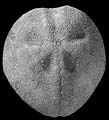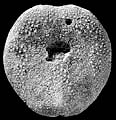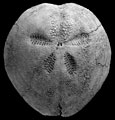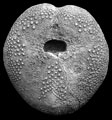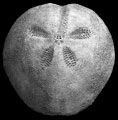The Echinoid Directory
Apoxypetalum McNamara, 1993, p. 40
| Diagnostic Features |
|
|---|---|
| Distribution | Upper Oligocene of Australia. |
| Name gender | neuter |
| Type | Apoxypetalum chenjafra McNamara, 1993, p. 40, by original designation. |
| Species Included | Only the type species. |
| Classification and/or Status |
|
| Remarks |
|
